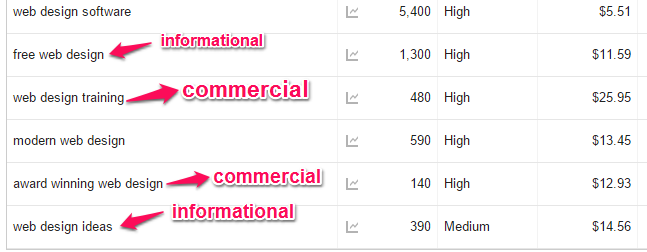Search engines aren’t the only source of targeted visitors, but effectively targeting long-tail keywords in your content can greatly increase your monthly search visitors.
I’ve generated 173,336 qualified visitors from long-tail keyword phrases in the past year – a 91% increase.
Your long-tail keywords may not rank in Google’s top 10 results and it’s true that 60% of all organic clicks go to the top 3 search results, but that still leaves 40% up for grabs.
Working with your team, you can easily capture those extra clicks by employing long-tail keywords.
If you consistently publish in-depth content around long-tail keywords, you’ll see an increase in search traffic, attract paying customers and grow your brand.
Now that you know the potential impact of long-tail key phrases on your site growth, let’s dive in and learn how to sustain that organic traffic.
In this article, we’ll cover these four topics:
- How to research long-tail keywords
- Case studies on long-tail keywords
- Ranking elements for long-tail keywords
- Tools to help you pick the right long-tail keywords
-
One of the questions I get asked weekly is: “How long should a long-tail keyword be?” And, my answer has always been “four keywords or more.” The longer the keyword, the easier it is for you to rank well for that keyword.
Here are some examples of good long-tail keywords in the fitness niche:

To research your own long-tail keywords, follow these simple steps:
Step #1: Start with seed keywords. Let’s assume that you want to target the keyword “copywriting.” To find long-tail variations of that seed keyword, go to Ubersuggest and type in copywriting. Then, click “search.”
It’s up to you to decide what’s relevant, based on the type of content you’re creating, but Ubersuggest can help pinpoint in-demand keywords.
The second column is the average number of monthly searches on Google. Search for high-volume keywords with a low SD (SEO Difficulty). I tend to focus on those with an SD of 50 or less.
his tells you everything you need to know about the keyword:
- Google SERP – the top 100 URLs that rank for the keyword
- Estimated visits – the estimated traffic the webpage gets from Google for the keyword
- Links – the number of incoming backlinks to the webpage
- DS – the domain score, ranking the overall strength of the website from 1 (low) to 100 (high)
- Social Shares – the total number of times the URL was shared on social platforms
This data will help you decide two things: if the keyword is worth targeting based on estimated monthly visits, and your chance of reaching the first page of the Google search results.
Understand long-tail keyword intent: The intent behind any particular keyword is much more important than the keyword itself. According to Tom Fanelli, “when you think about intent, good keywords will follow.” Your content will improve as a result.
Long-tail keywords that address the need of the searcher or solve a definite problem will most likely rank well on Google, compared to similar head keywords.
When you use a keyword strategy, don’t be perturbed by Google’s algorithm changes. Focus on what really matters and you can be confident in the decisions you make.
Customers who type descriptive key phrases (long-tail) are generally more qualified than those who type head keywords or short tail phrases. As a result, the conversion rates are higher for long-tail keywords, as compared to head keywords.
But, most customers aren’t ready to buy yet. Some prefer to browse, while others want to learn about the product before placing their order. What buying cycle does your keyword fall into?

If consumers haven’t made up their mind to purchase, they’ll probably search for “informational keywords.”
Examples:
- how to lose weight workouts
- search engine optimization tips
- make money online with no money
- make money on the internet free
- free ebook download
- top 10 free plugins for WordPress
However, when searchers are ready to buy, they use keywords displaying commercial intent.
Examples:
- survival knife review
- buy fire TV
- weight loss programs
Commercial keywords usually contain certain prefixes (words that appear before) or suffixes (words that appear after), which modify or qualify the long tail keywords. Small business owners would do well to learn the buy words. Here are some of the popular ones:
- Buy
- Review
- Purchase
- Discount
- Coupon
- Deal
- Shipping
- Order
You’ll usually find both informational and commercial intent keywords in your research. With consistency, you can improve your search ranking by targeting the keywords with useful and detailed content. Here’s an example:

2. Long-tail Keywords Case Studies
So many bloggers and website owners are now taking full advantage of long-tail key phrases as their foremost keyword tool, because these search terms are low hanging fruit – easier to reach and pick. Long-tail SEO is all about filling a void, answering a question and helping search users save time.




No comments:
Post a Comment
https://saviournicodemus.blogspot.com